If we’ve learned anything in all of our travels, and if we’ve learned anything listening to our partners across China, it is that there are countless kinds of tea, and each one has a different portrait of perfection, a different goal for which it strives.
That is because the best tea in the world isn’t defined by a checklist of conditions. Instead, it is the fortuitous result of many pieces coming together, just exactly so.
While it is tempting to generalize and try to “rank” teas by picking date, by elevation, or bud count, this is a fool’s errand. If there were one ideal, then there would only be one ‘perfect’ tea, and that would be a sad world indeed.
This is the idea behind our Field Guide series. For the next few weeks, we’ll explore nine different growing regions and get to know nine different families. As we explore, we’ll work to understand what it is about each region that makes each unique. We’ll tease apart how this influences he values of the growers that set those ideas of what perfect tea is, and why their particular combination of weather, soil, varietal and craft brings them awards, national recognition and inspiring tea.
PART ONE: the Li Family
Wuyishan Ecological Preserve
The Ecological Preserve was created to protect the pine, cedar, fir and bamboo forests lining the rocky mountains along river. This region is rich in wildlife, especially birds who nest in the forests. Our partners, the Li Family, have preserved the natural forest cover through much of their oolong fields and in all of their wild tea plot within Tongmu. The natural habitat this creates for birds keeps insects in check by preserving their predators. Because of this, the Li Family does not use pesticides on any of their land.
Shade provided by native trees is also an important influence on the flavor of Wuyi oolongs. For example, Li Xiangxi’s older brother prefers the sweetness in the harvests he can get from plants that are tucked into the shadowed folds of hills, rather than teas that sit at the top of a peak and receive sun all day.

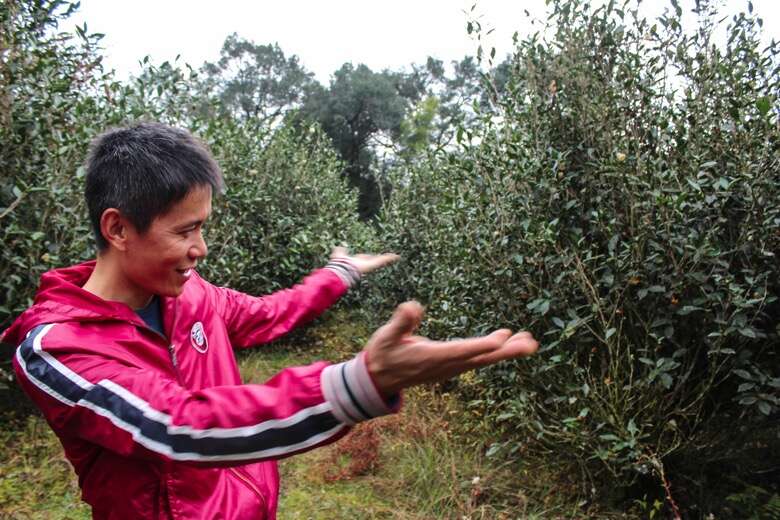
In 2008, the local government banned clear-cutting to protect the region from erosion, safeguard the natural springs, and preserve wildlife habitat. Despite this, many farmers continued to clear-cut to make room for tea as the prices and demand for Wuyi tea skyrocketed. In 2018, the Wuyishan government has finally cracked down and ordered all tea planted after the decree to be ripped out.
The goal is to preserve the natural beauty of the area for generations to come, while also protecting against erosion and monoculture agriculture. This new policy enforcement is going to lead to a lot more tea from outside the region being passed off as Wuyi tea, but also to higher prices and higher demand for tea from farmers like the Li family whose plots were established in harmony with the environment and long before the 2008 law was passed.
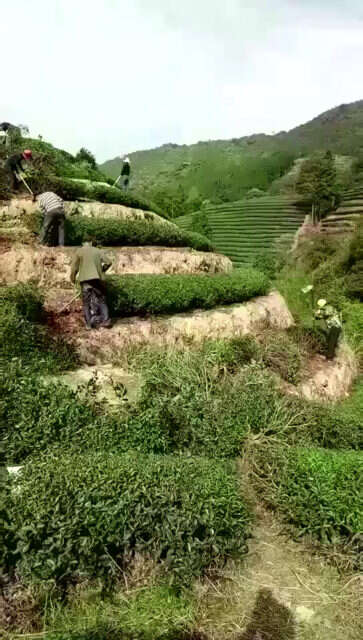
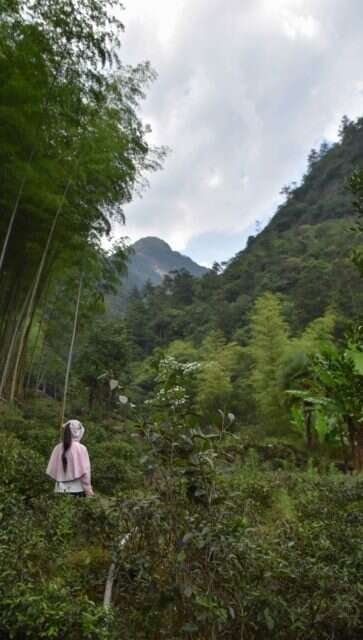

Within Wuyishan are many microclimates that have become famous for their specific orientation, temperature, cloud cover and mountain springs.
Two famous microclimates for tea in Wuyishan are Ma Tou and Niu Lan Keng. Both regions are within walking distance of each other, but produce tea of completely different profiles. These iconic regions are marked by the stunning rock formations that frame the mountain valleys.
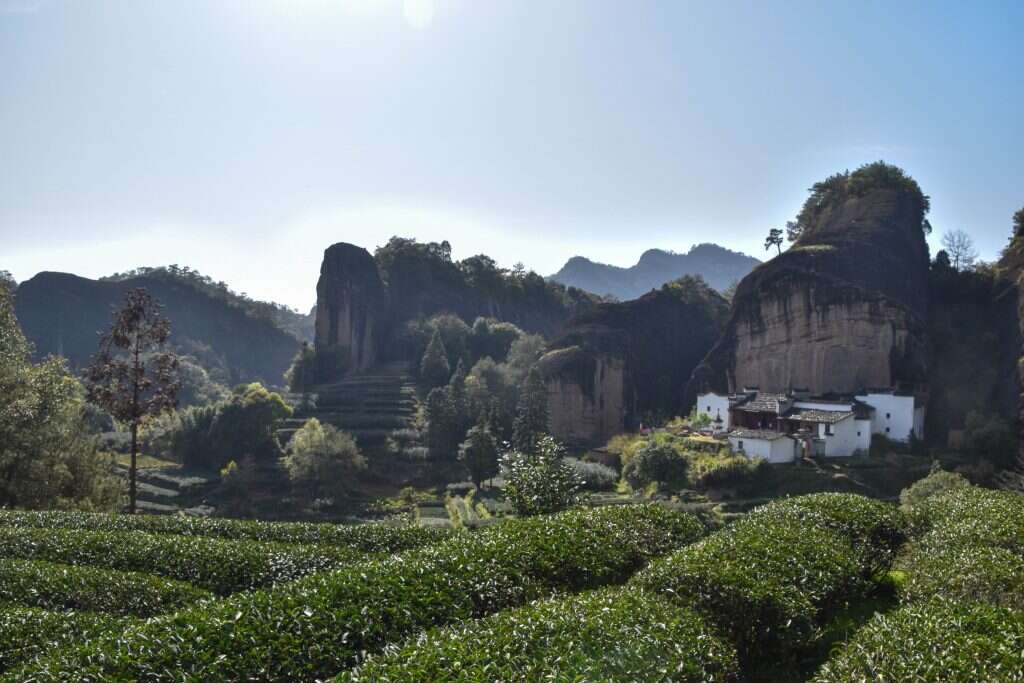

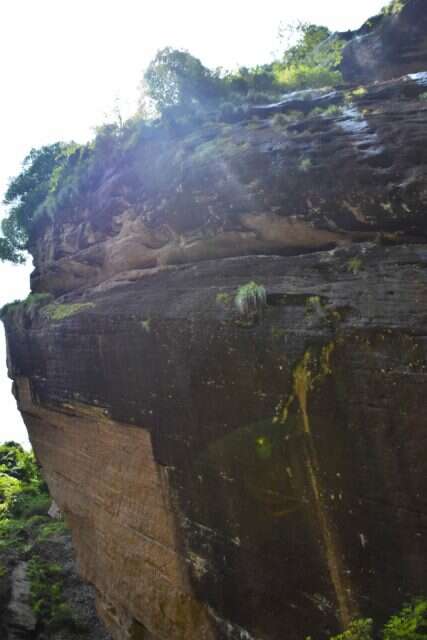
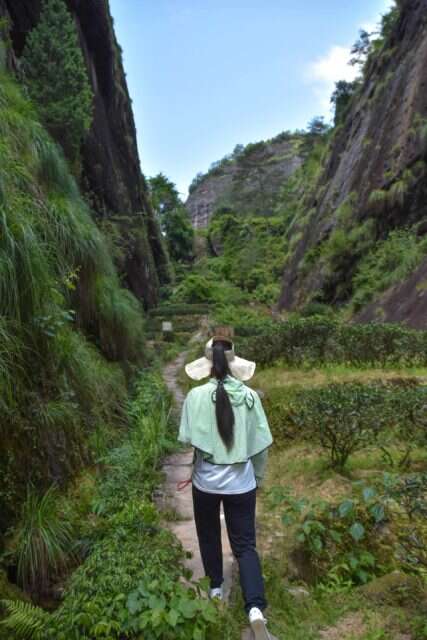
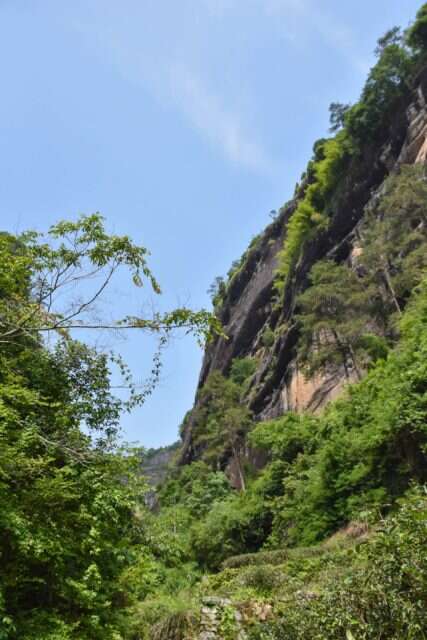
While the Li Family’s tea plots are in Tongmu and along the mountainsides lining the river gorge, their award-winning craftsmanship has given them access to tea from these iconic micro-climates.
Every year, the Li Family finishes a small batch of Niu Lan Keng and Ma Tou region Rou Gui varietal oolong. The farmers lucky enough to have land in these areas generally focus on selling their fresh leaves to people like the Li Family.
Sadly, some farmers in the most famous regions also make money by renting out space for signage so that large companies can put up signs claiming to own plots that are not theirs. While this means revenue in the short term for local farmers, it hurts the economy as a whole because it allows factory farms to produce and sell fake teas claiming a unique microclimate that is not theirs, which warps the overall demand for the genuine article.
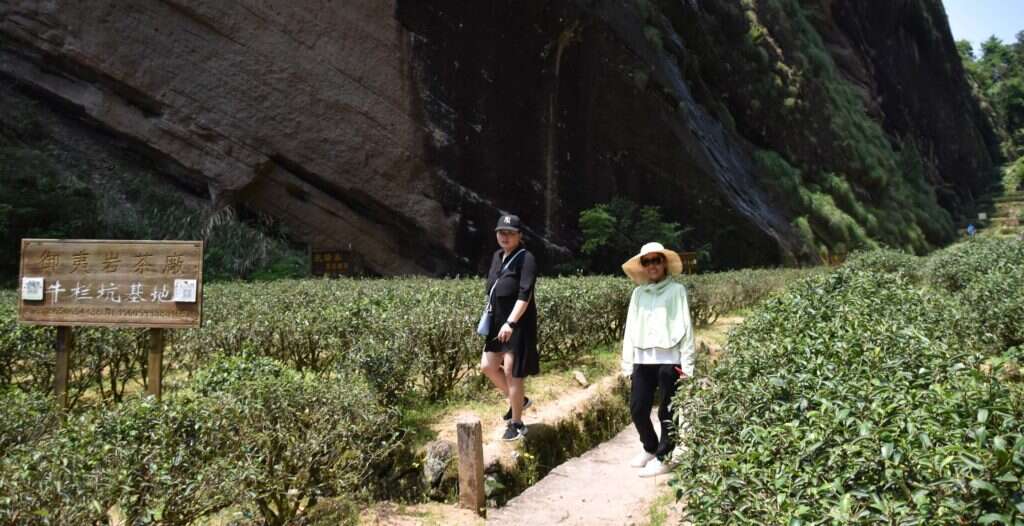
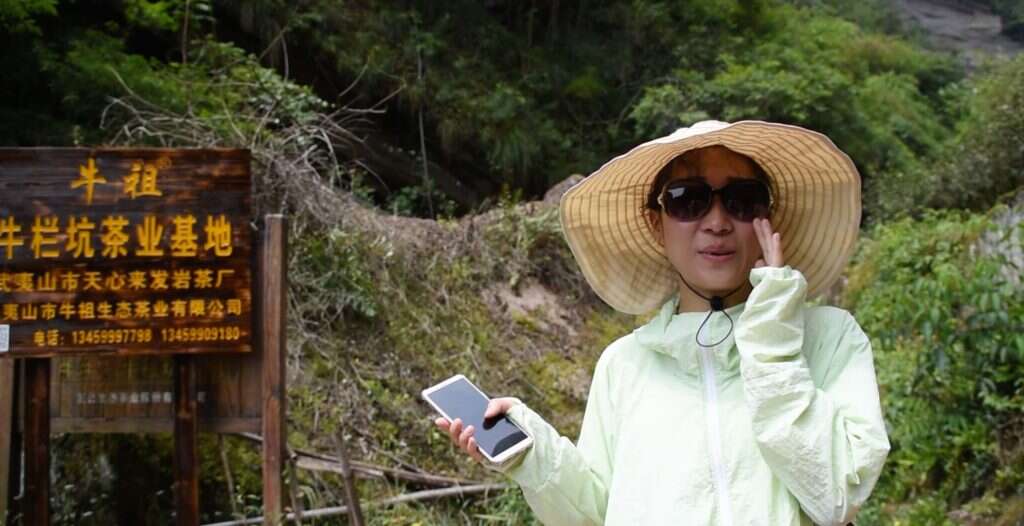
Despite being one of the most “traditional” tea growing regions, Wuyishan has historically been flexible when it comes to trying out new techniques and varietals. Perhaps because of its position between Jiangxi and Fujian, exposing it to different ideas and people, or perhaps because of early tea trade with Europe, Wuyishan has been an innovator since the beginning. The region is credited with being the birthplace of black tea, smoked tea, and of strip-style oolong.
Tea grows wild all across the mountains of Tongmu, often straight out of rocks. This wildly-propagated tea is not varietal-specific; instead, it grows from seed, and is generally called Wuyi Xiao Zhong. This genetically diverse, wonderfully complex tea is what goes into Wild Tongmu Jin Jun Mei and other teas like it.
Specific cutivars of tea are generally planted, cultivated, and propagated through grafting. This tradition in Wuyishan can be traced back to the original five tea bushes that were called Big Red Robe. This famous tea was so cherished that eventually cuttings were taken and planted throughout Wuyishan. The original Big Red Robe bushes that were so suitable to oolong production gave birth to the Qidan cultivar used for Big Red Robe today.

Now Wuyishan is home to dozens of varietals from well-known teas like Shui Jin Gui and Anxi natives like Jin Guanyin to more obscure Que She, Bai Rui Xiang, and Shi Ru. Culitvar-specific teas are used almost exclusively for oolongs because their distinctive aromas that can be brought out in oolong processing. That said, there are exceptions: teas like Mei Zhan Jin Jun Mei use the gigantic buds of the aromatic, large-leafed Mei Zhan cultivar, and is a favorite of the Li Family’s for single-varietal Jin Jun Mei.
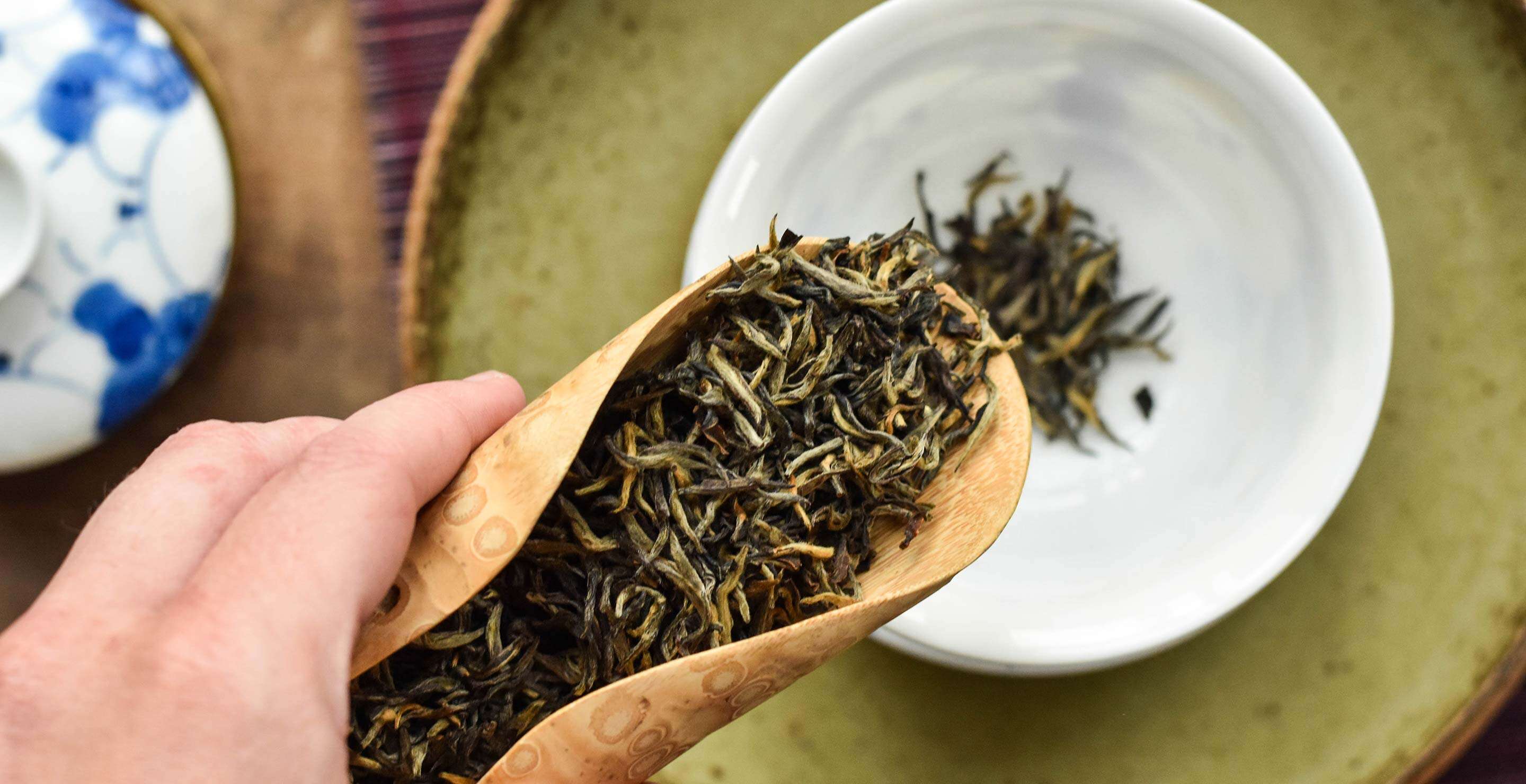
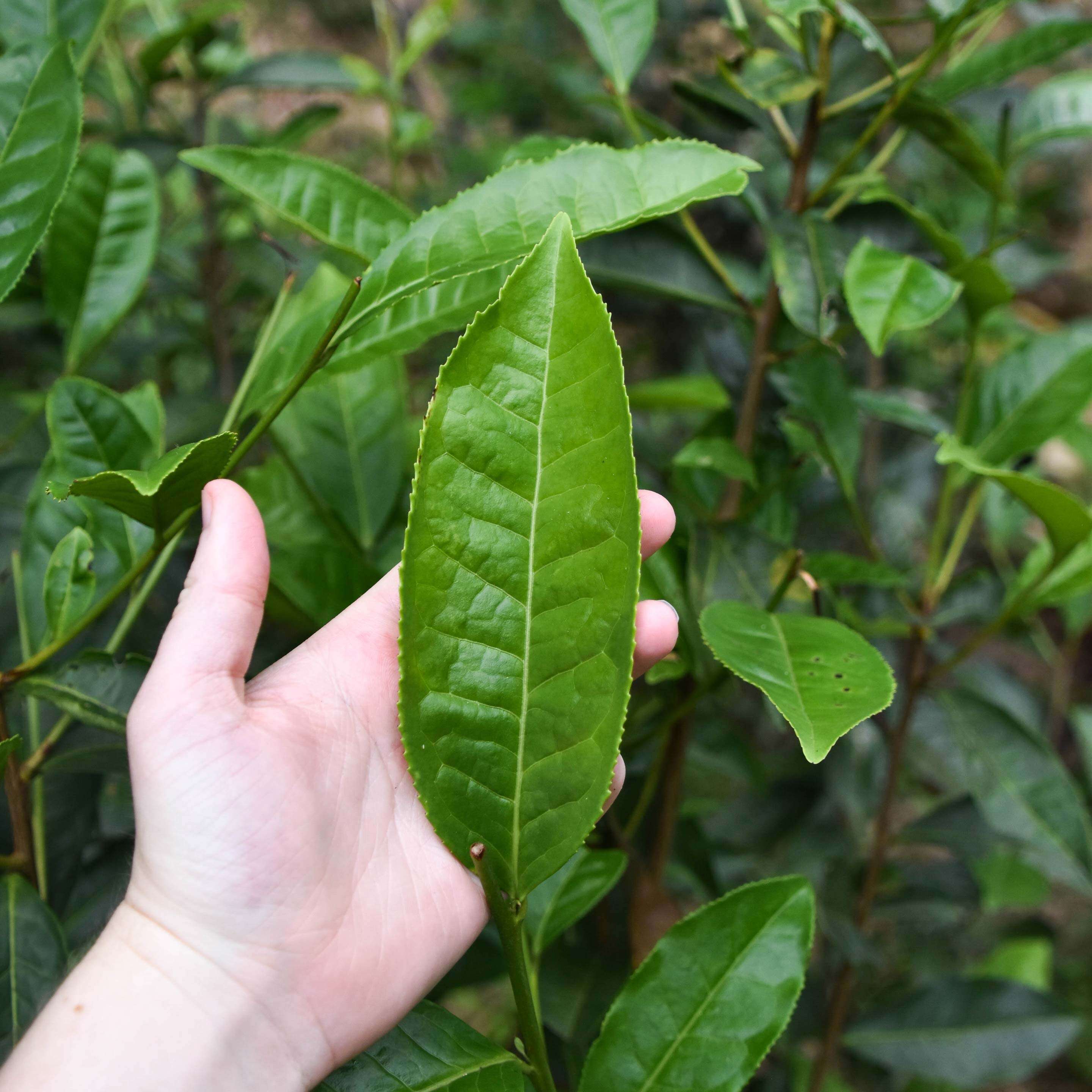
Oolong varietals come and go in popularity and public awareness. Over the last five years, Rou Gui has become the most famous and sought-after, perhaps because of how much the varietal changes in flavor and texture depending on where it is planted. Or perhaps the growing fame of regions like Ma tou and Niu Lan Keng help feed the love affair of a growing class of domestic tea lovers within China.
Tea in Wuyishan all has an inherently “rocky” backbone to its flavor and texture profile.
Every varietal that is chosen for the region highlights the taste of the rocky volcanic soil. The older, more mature tea bushes with deeper roots draw up mineral content from the soil. Perhaps this is why the ultimate ideal of Wuyi teas is “yan yun,” a complex physical sensation of pervasive aftertaste, cooling tingling in the back of the throat and mouth-watering juiciness.
The most prized (and most expensive) teas have clear rocky profiles and a strong sense of “yan yun,” regardless of whether they are black teas or oolongs. These specific flavors come about because of the region’s unique climate and soil, as well as the varietals chosen, but they are refined and concentrated by the choices each craftsperson makes during production.

Li Xiangxi’s cousin lives and works at the family’s historic home in the Tongmu Protected Area, a sub-region within the Wuyishan Ecological Preserve.
The family picks wild tea in the mountains above their home as well as cultivating a semi-wild tea garden dedicated almost entirely to black teas.
The family home (pictured above) is built around the smoke-house used to finish Zheng Shan Xiao Zhong, which is produced here along with Jin Jun Mei, Wild Jin Jun Mei, and Wuyi Gongfu Black.

Li Xiangxi’s brother oversees the family’s oolong bushes nestled in a valley between two hills along the river gorge.
Here, he tends to the family’s decades old Lao Cong Shui Xian and Xiaozhong varietal trees, along with their cultivated bushes of Rou Gui, Shui Jin Gui, Qi Lan, Qi Dan and over a dozen others. The family workshop here has dedicated space for firing oolong in the traditional style, as well as for storing and aging teas like Shui Xian.
Li Xiangxi runs the aging program for the family and pilots new projects – like pressing oolong into cakes.
She also represents the family at community competitive tastings, and runs a successful school of Taoist Wuyi tea ceremony. Together, the Li Family is one of the most formidable in the area, bringing home gold medals at every competition, and being chosen by the Wuyi government to meet visiting dignitaries.
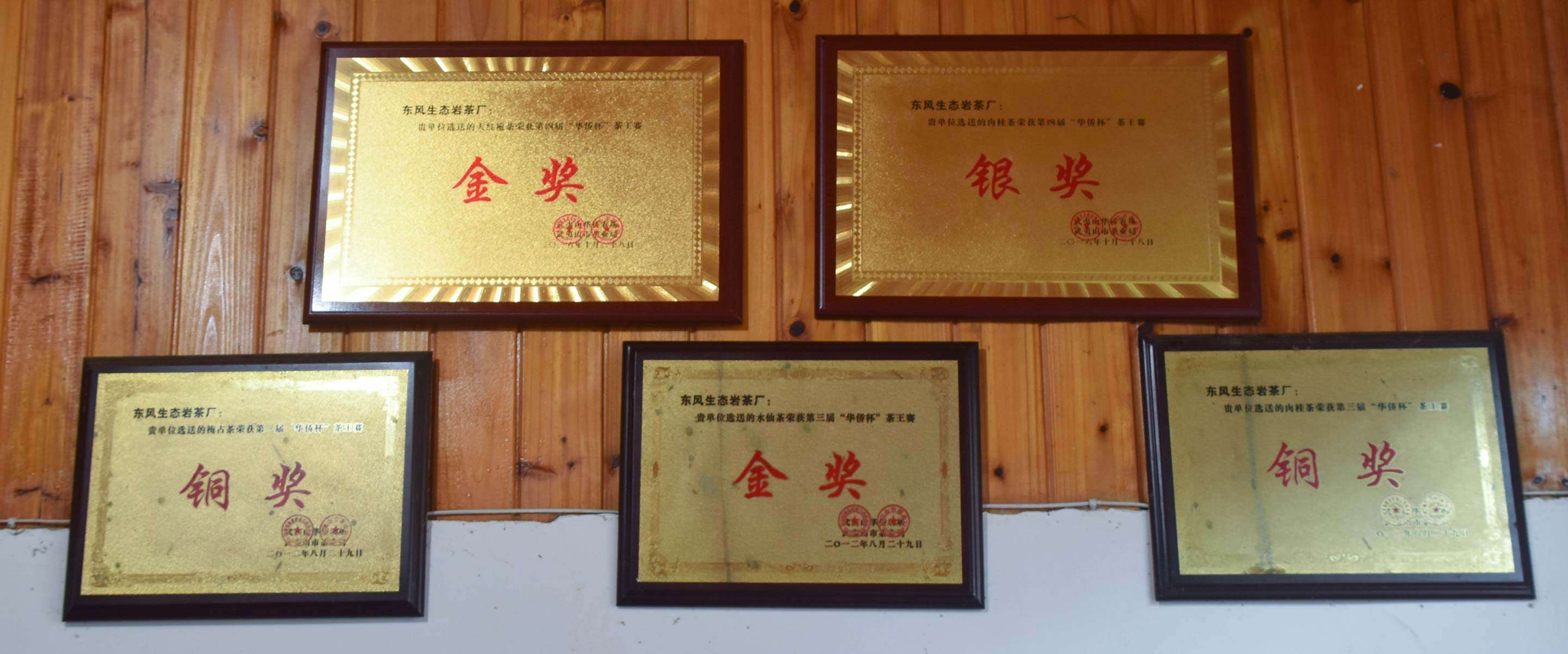
Li Xiangxi’s goal is to forge a new culture for tea in Wuyishan through her Yangxian Tea Institute, and inspire people through her family’s craft and advocacy to make tea a part of their lives.
Eventually, Li Xiangxi hopes to visit Europe and the United States in the coming years as an educator, and cultivate a worldwide respect for Wuyishan, Tongmu, and the Taoist tea tradition.
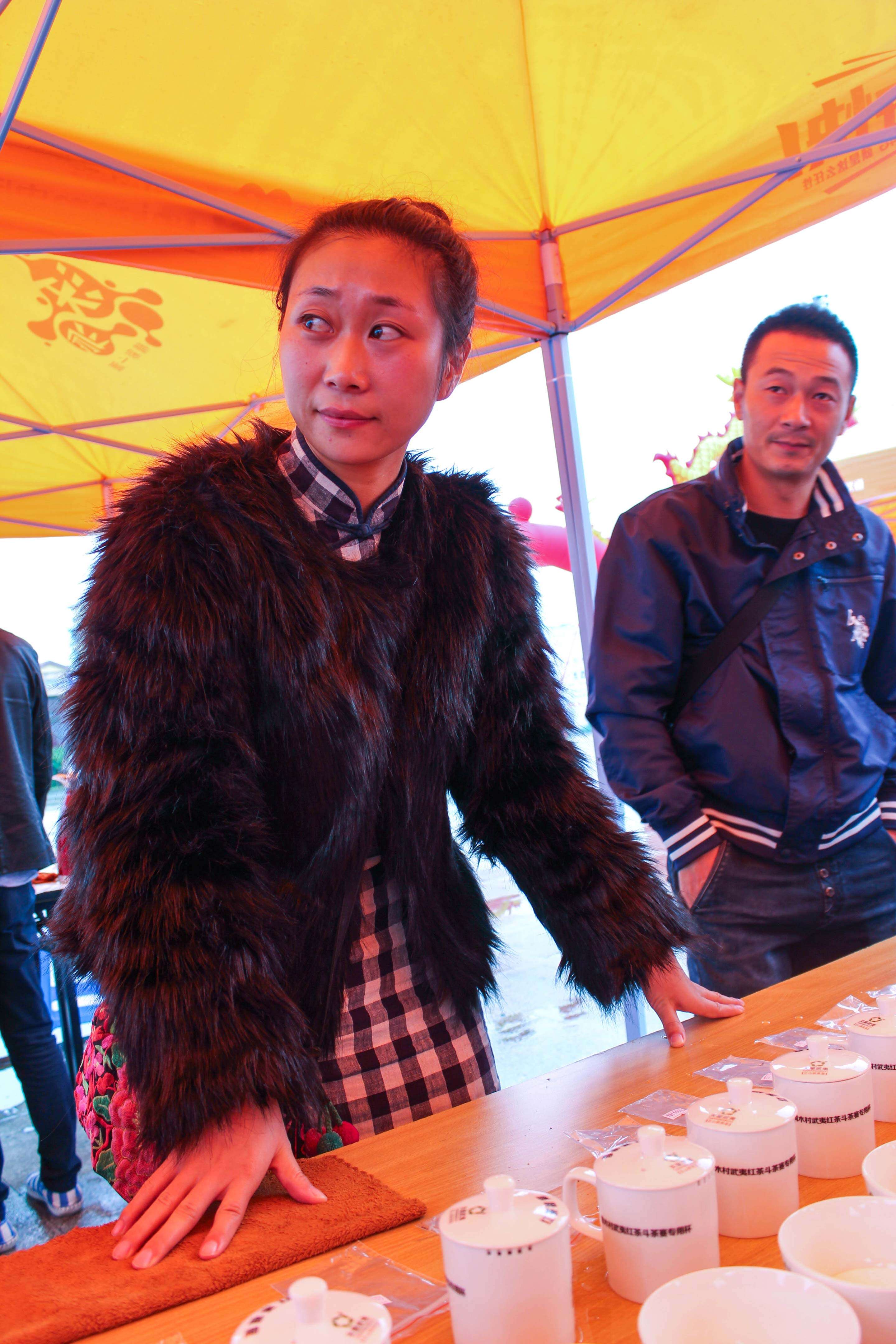
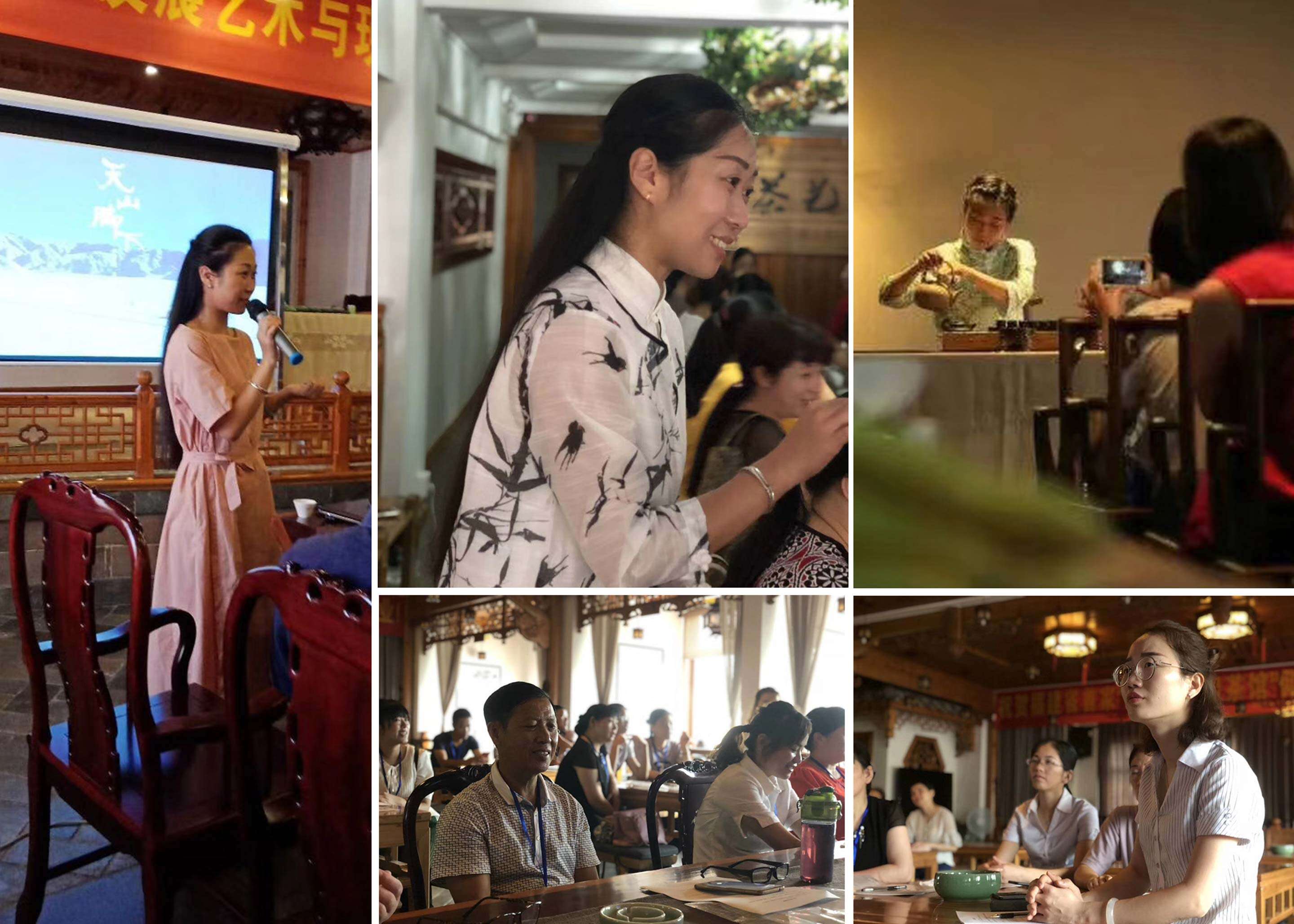
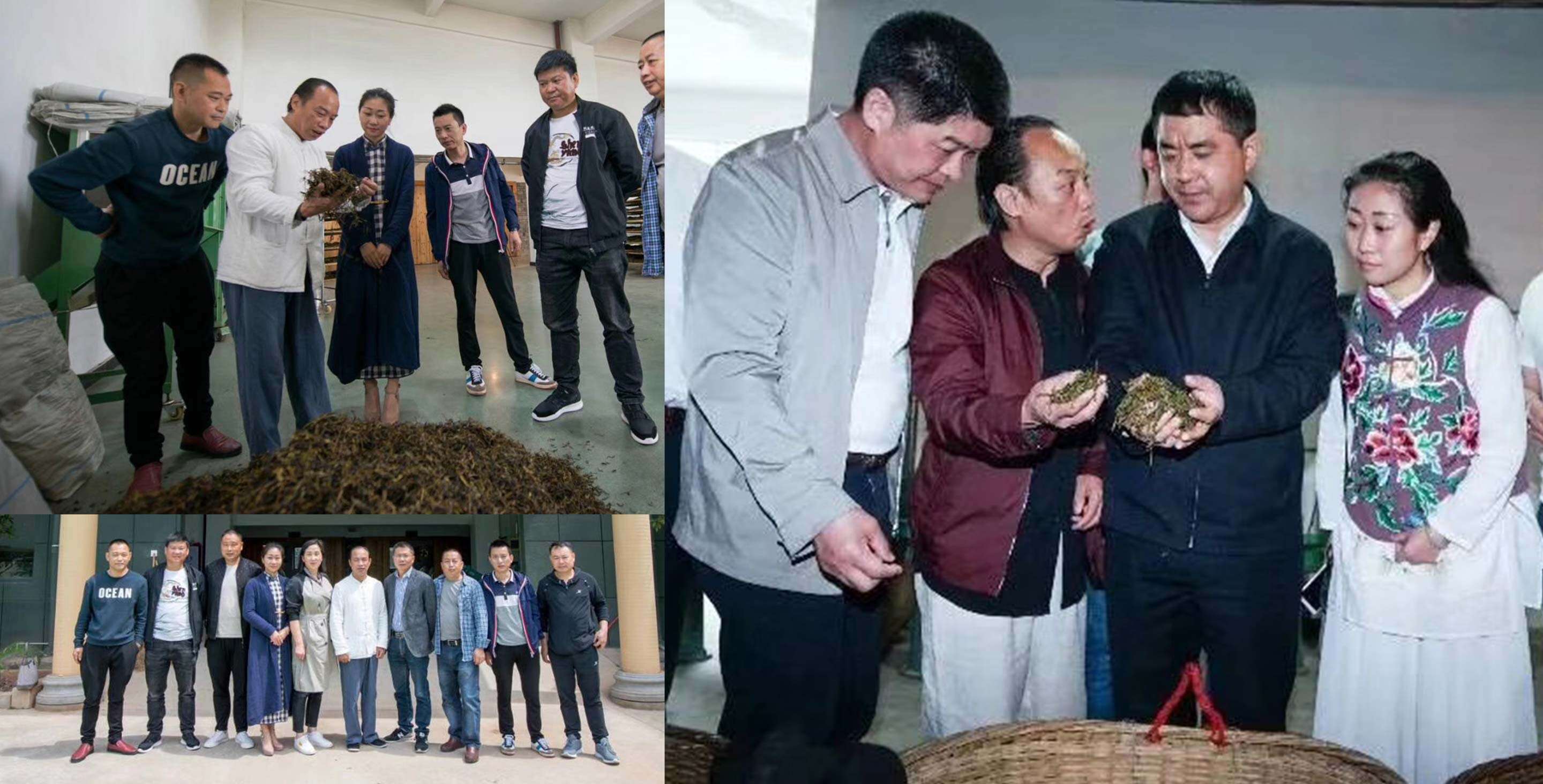
As one of the most famous tea growing regions in the world, Wuyishan encourages specialization even among small family farmers.
For example, the farmers who care for tea bushes in Ma Tou and Niu Lan Keng make so much money from selling fresh leaf that almost all of them choose to focus their energy on picking and agriculture – raising the best plants possible without worrying about wasting time and space on workshops. Oolong craft is so time-consuming and complex that it requires full dedication to run a workshop that brings out the most in every leaf. The firing process of finishing Wuyi oolong is so strenuous that some families specialize in just firing other people’s tea to spec.
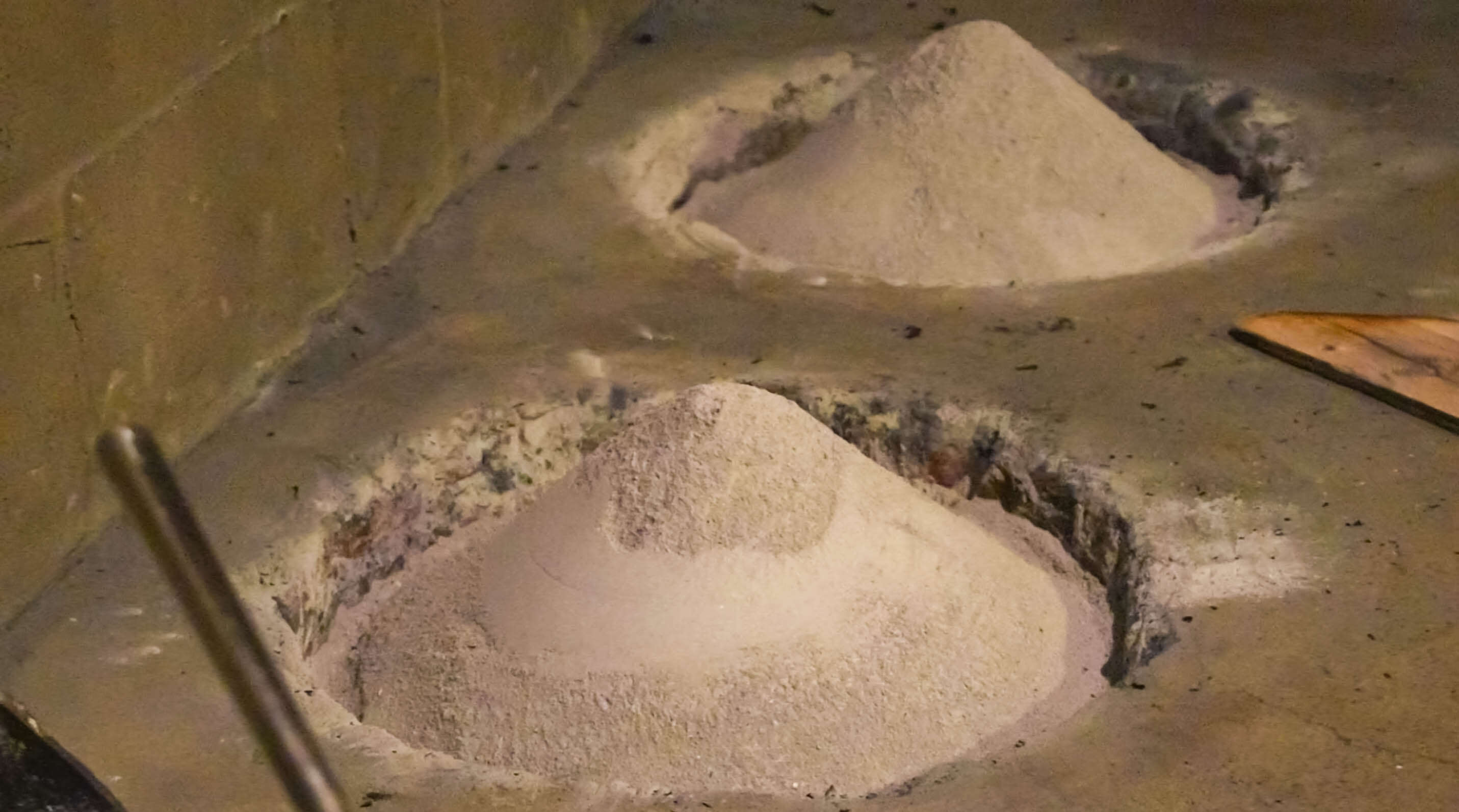
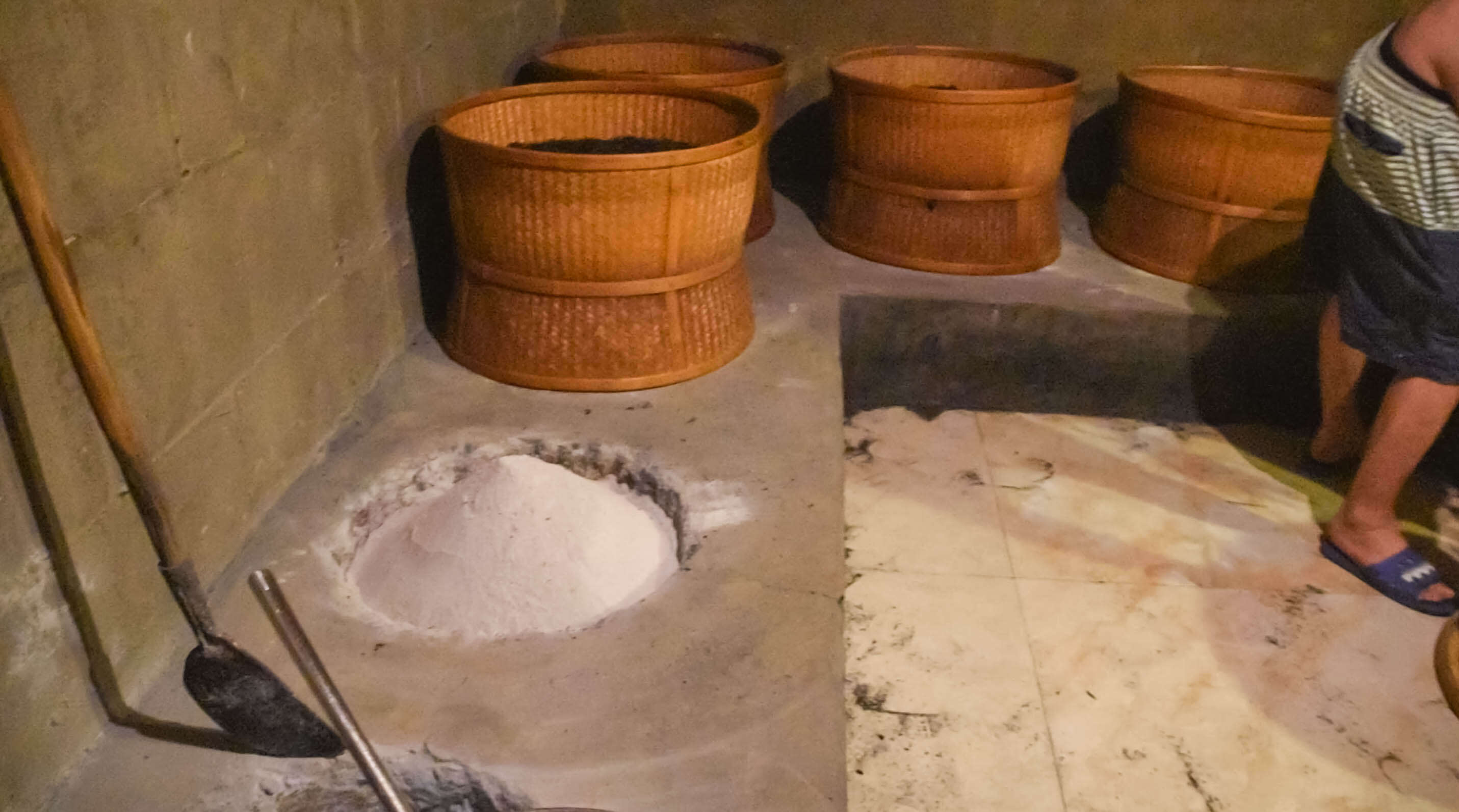
The Li Family is lucky to divide the management of making tea among three siblings, along with the help of a handful of aunts, uncles and cousins. While almost all of our other partners run every aspect of tea production themselves in smaller nuclear families, the Li Family divides and conquers, with several family members working exclusively to keep the plants healthy and well-managed, others handling black tea production, and others producing oolong.
The youngest of her generation, Li Xiangxi unites the family, travelling between the black tea and oolong workshops, collaborating on picking, and finishing with her brother and cousins.
Because Wuyi teas command such high prices, families picking within the Wuyi Ecological preserve are highly motivated to use traditional hand finishing techniques, including the shaking and bruising of the leaves to produce oolong, spreading and wilting, and especially firing.
While larger workshops utilize gas and electric ovens to fire their oolong to produce that deep sweet caramel taste, the Li Family believes that the temperature variation tea is exposed to when fired with local hardwood charcoal produces the most complex flavor and brings out the most cooling “yan yun” sensation.

Devotion to truly refined craft is what wins respect for a family in Wuyishan. Despite being such a popular tourist destination, Wuyishan, Tongmu and Xingcun are all still small towns at heart, where everyone local knows each other. Despite all the Li family cousins being quite young, all still under 40, the family’s laser-focus and specialization among family members has opened up doors for them. Their connections and repuation give them access to limited harvests of fresh leaves from tiny microregions like Ma Tou and Miu Lan Keng. Their long family history in the region gives them access to Wild Tongmu tea plants for coveted Jin Jun Mei. And Li Xiangxi’s takes her position of cultural leadership extremely seriously, for the teachers she trains at Yangxian academy will go on to train the next generation of tea professionals.
The unique climate, long history, and red-hot demand in Wuyishan come together make it an incredible and singular growing region whose tea has an unforgettable flavor and thrilling texture and aftertaste!
In our next installment, we’ll get an overview of Fenghuang and Dancong production, a modern success story led by a tenacious group of now-mythical pioneers who looked to apply some of the craft and magic of Wuyishan in their own hometown.


 How To
How To Myths & Legends
Myths & Legends Travelogue
Travelogue Tasting Journal
Tasting Journal Talking Shop
Talking Shop Tea 101
Tea 101 Watch
Watch Teaware
Teaware News
News
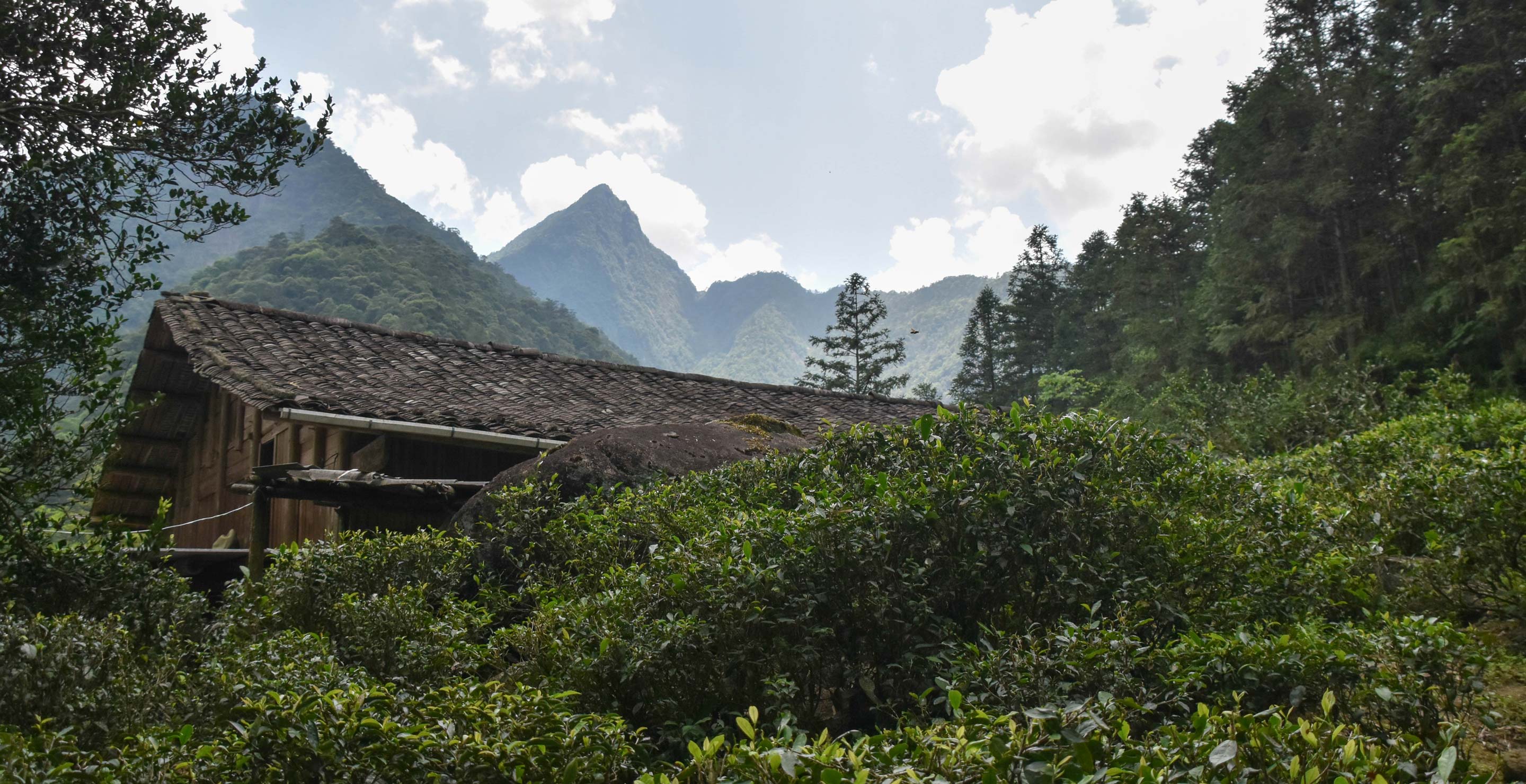


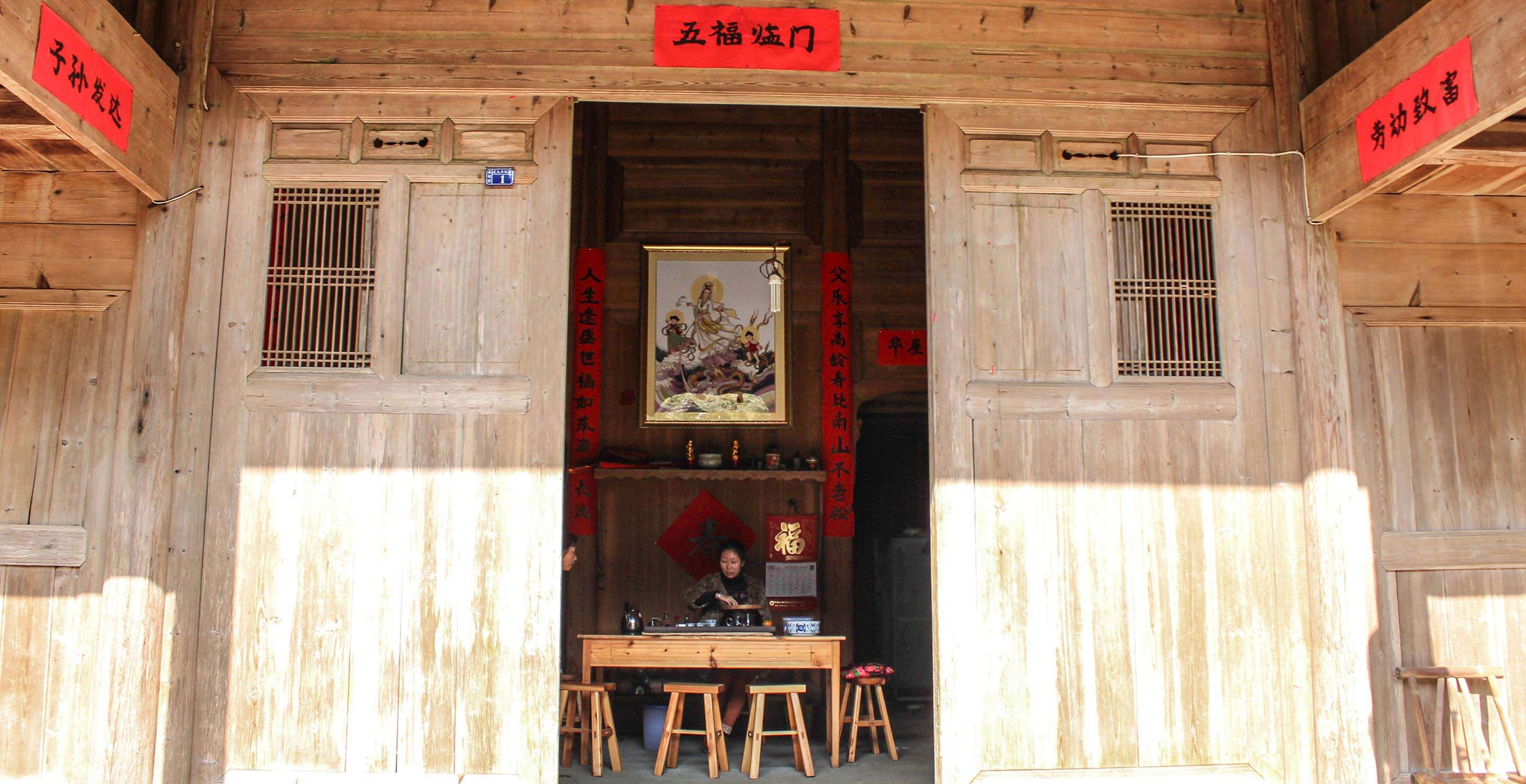
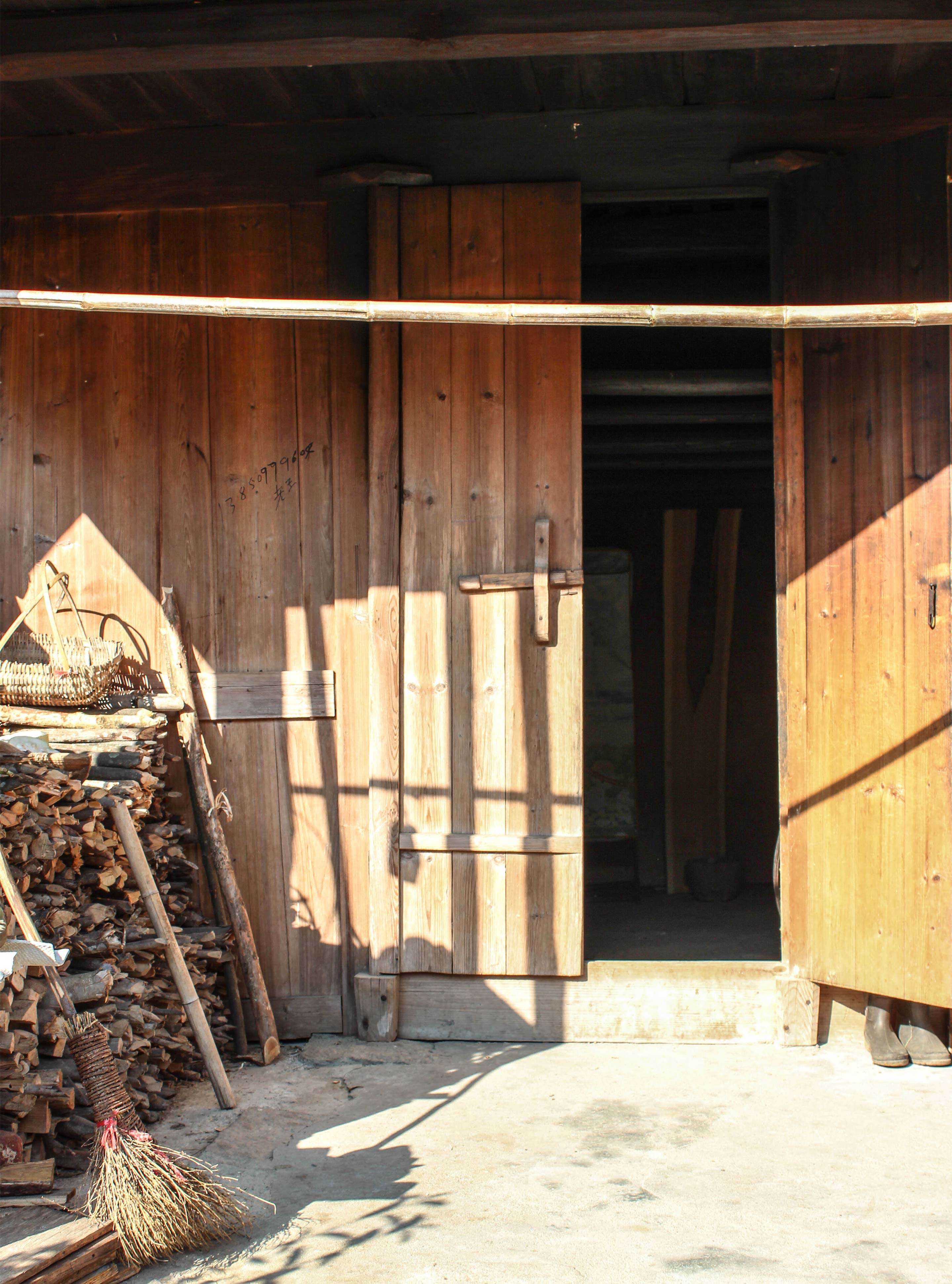
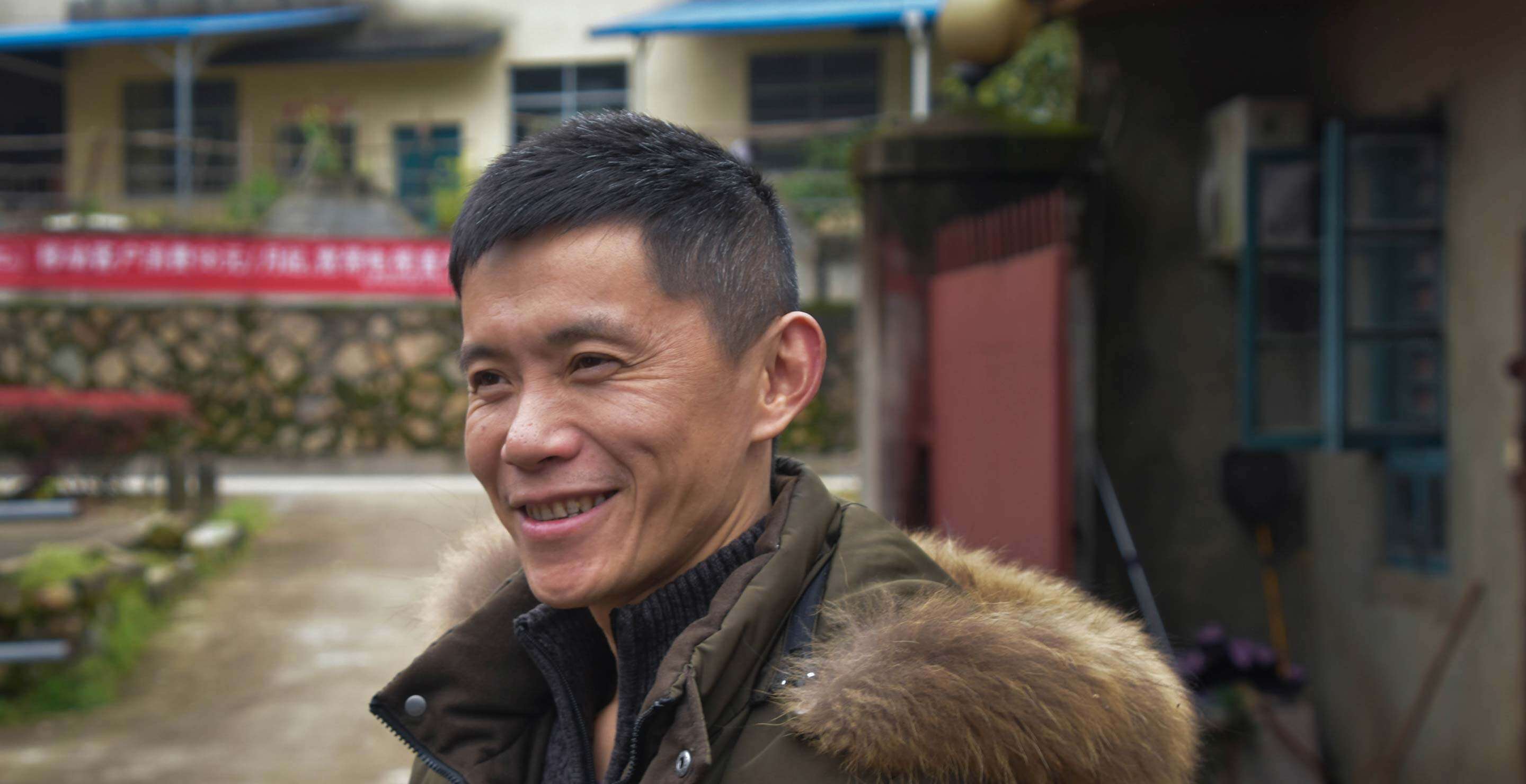
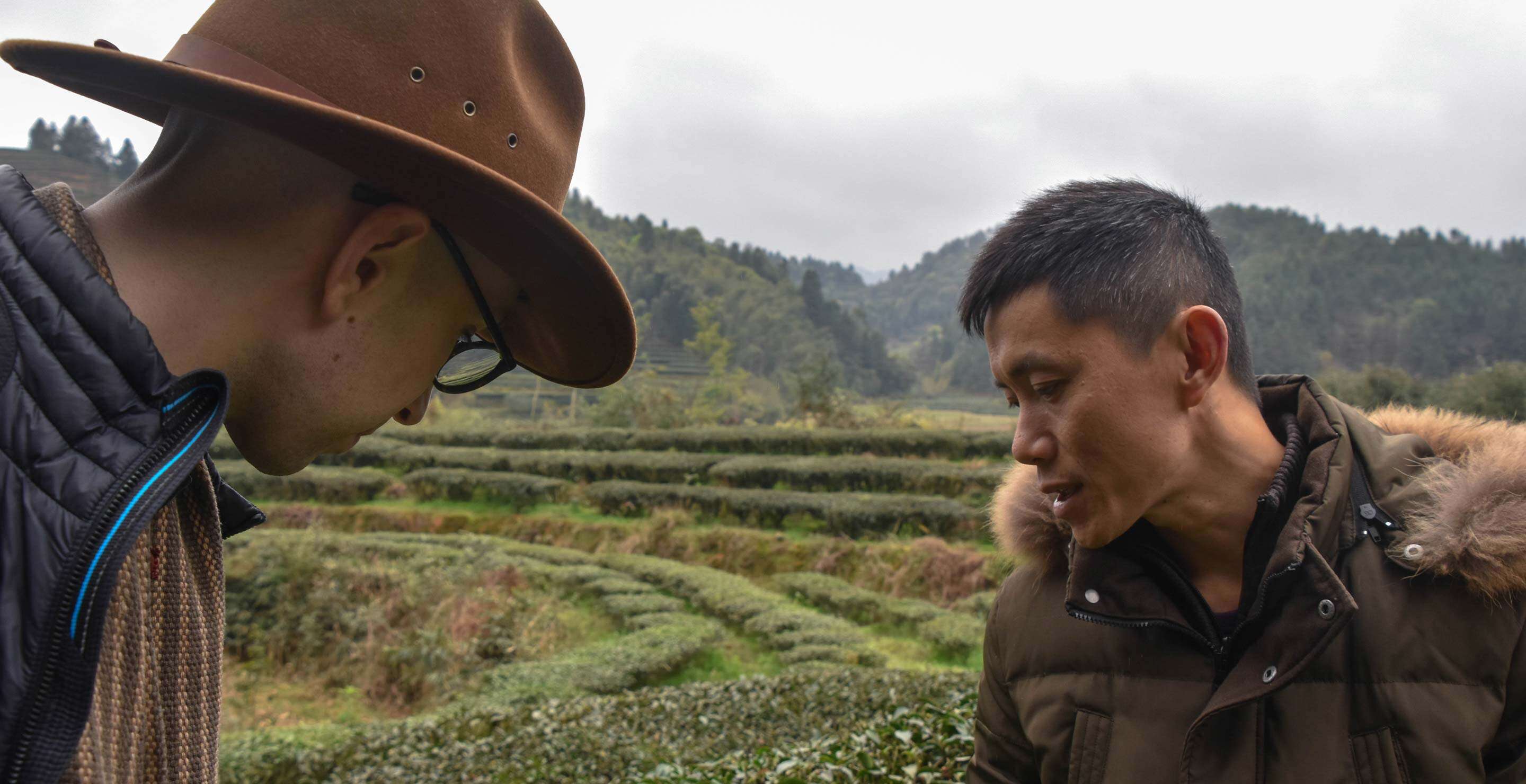
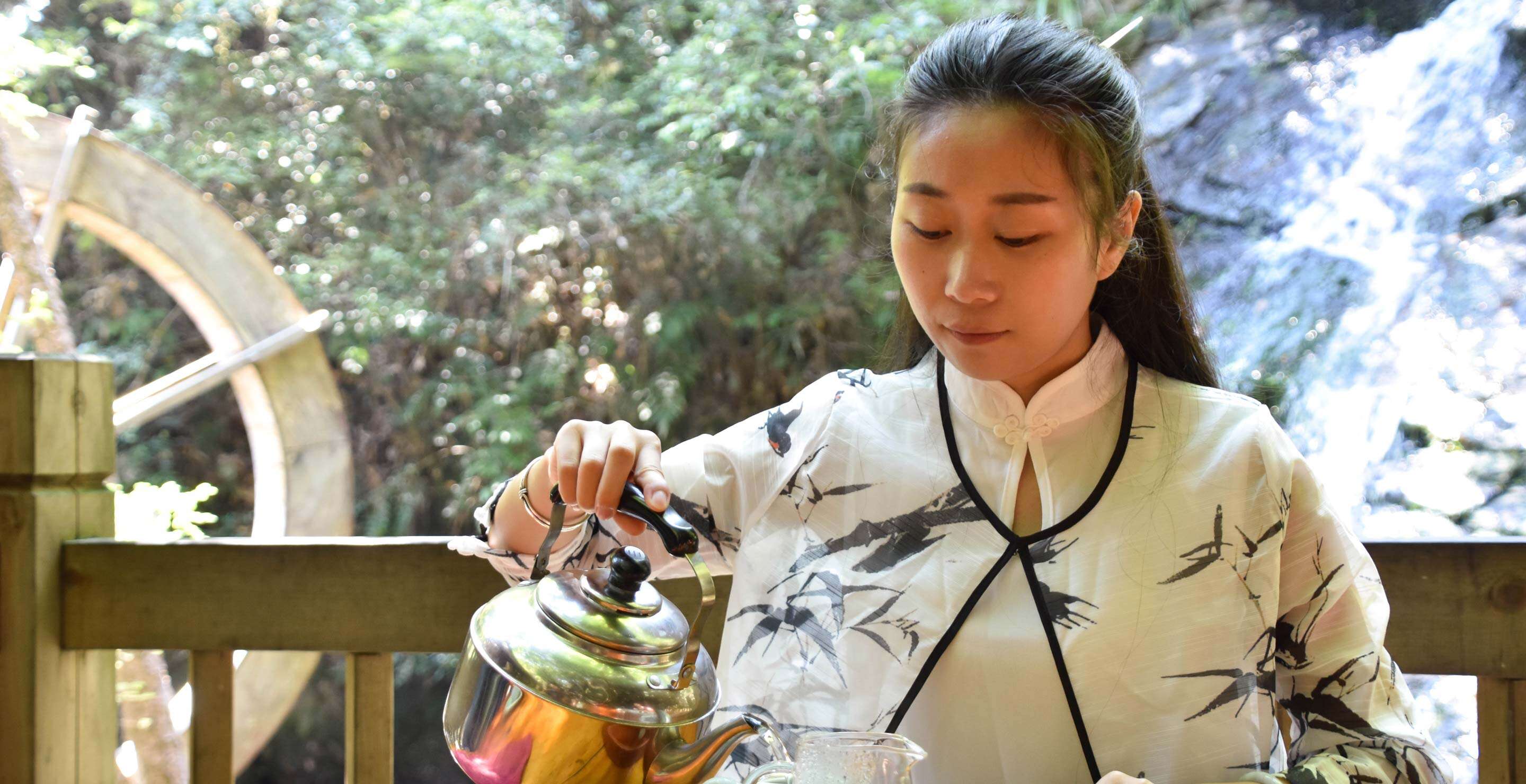
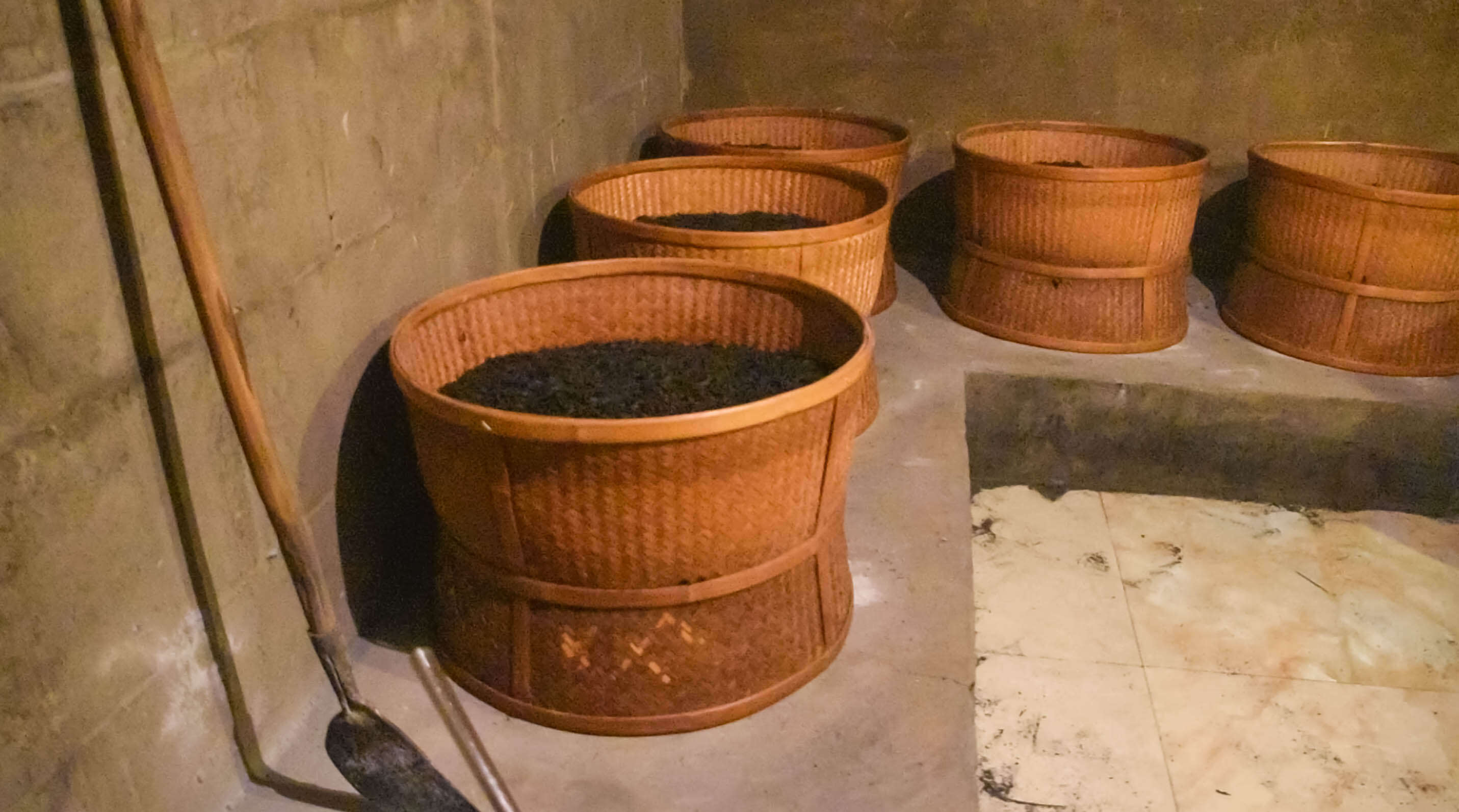
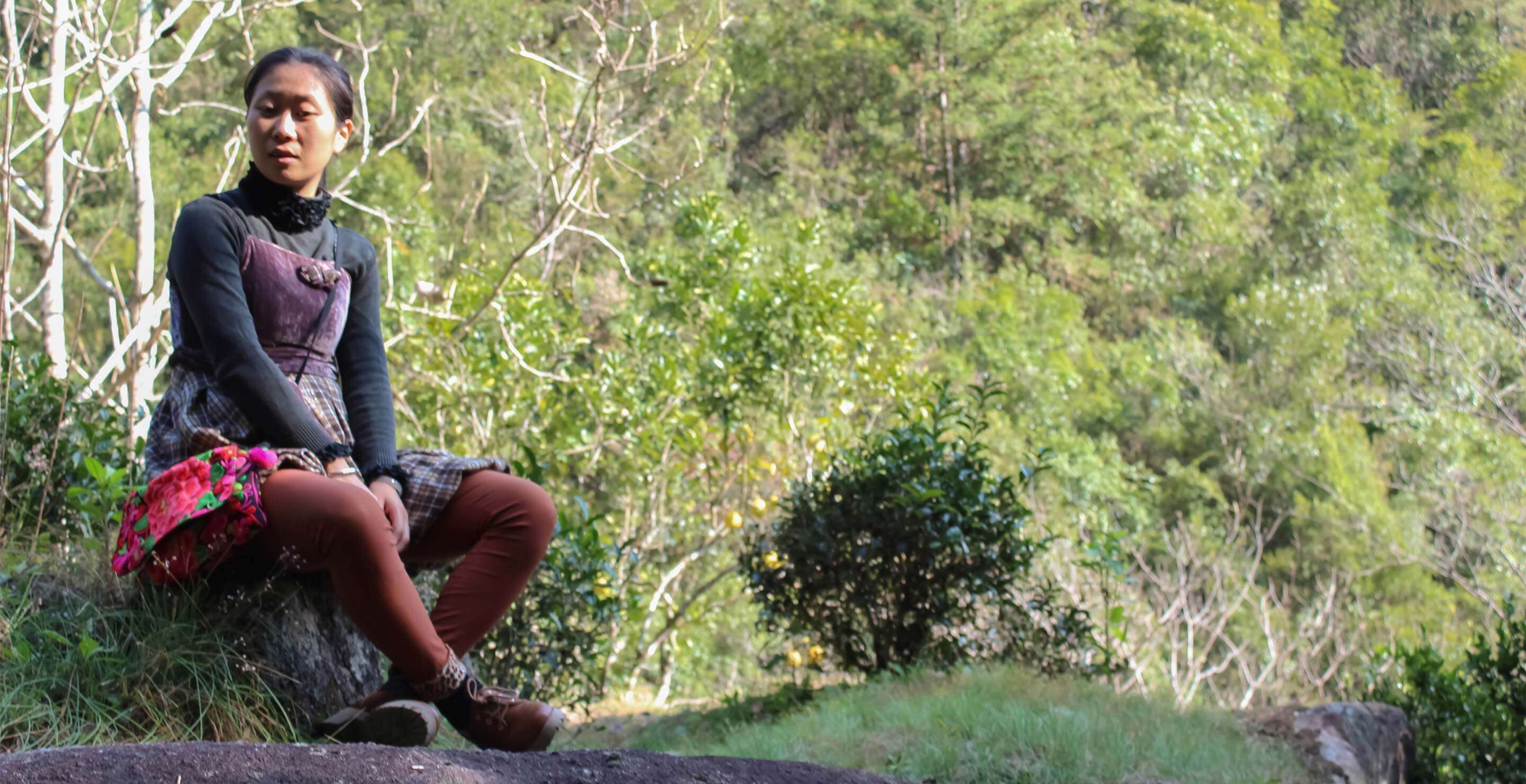
Leave a Reply